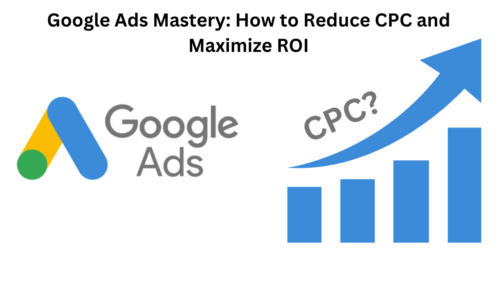Introduction
In the early days of SEO, it was all about stuffing as many keywords into your content as possible. You could rank a page just by repeating the same phrase over and over. Fast forward to today, and that approach is dead. Modern SEO is not about what people type into Google — it’s about why they’re searching in the first place. That’s where Search Intent becomes the game-changer.
Search engines, especially Google, have become incredibly sophisticated. Their primary goal? To understand what the user truly wants. And if your content doesn’t align with that intent, no matter how many keywords you throw in, you’ll struggle to rank.
So, let’s break down why search intent beats keywords, and how you can optimize your content strategy accordingly.
What is Search Intent?
Search Intent (also called user intent) refers to the reason behind a user’s search query. Are they looking for information? Trying to make a purchase? Comparing products? Wanting to navigate to a specific website?
It boils down to understanding the “why” behind the search.
Here are the four primary types of search intent:
1. Informational Intent
The user wants to learn something.
Examples: “how to cook pasta,” “who is Elon Musk,” “what is SEO”
2. Navigational Intent
The user wants to go to a specific website or page.
Examples: “Instagram login,” “OpenAI ChatGPT,” “Fuerte Developers website”
3. Transactional Intent
The user is ready to take action — usually a purchase.
Examples: “buy iPhone 15 online,” “best dry fruits near me,” “subscribe to Netflix India”
4. Commercial Investigation
The user is doing research before making a decision.
Examples: “best laptops under ₹50,000,” “Canva vs Photoshop,” “top marketing agencies in India”
Why Keywords Alone Are Not Enough Anymore
Let’s say you’re trying to rank for the keyword “best smartphones.”
If your content just lists keywords without providing real comparisons, specs, pros, and cons — users will bounce. Google picks up on that, and your rankings drop.
Here’s why keywords alone don’t work:
- 🔻 Search engines understand context now.
- ❌ Keyword stuffing leads to penalties.
- 📉 User engagement signals matter more than ever (time on page, bounce rate, etc.).
- 🧠 Google’s AI like RankBrain and BERT are trained to understand natural language and intent.
Why Search Intent is the Future of SEO
1. Google Rewards Relevance
Google ranks pages that answer the searcher’s actual question, not just those stuffed with keywords.
2. Higher Engagement Rates
Content that matches search intent leads to longer session durations, more clicks, and better interaction — all great for SEO.
3. Better Conversion Rates
When you serve the right content at the right time, you’re speaking directly to the user’s needs — which leads to higher conversion rates.
Read: Organic Traffic VS Paid Traffic
How to Identify Search Intent
Step 1: Analyze the Keyword
Look at the keyword and ask: What is the user really trying to do?
Step 2: Google It!
Yes, really. Look at the top 5 results. What kind of content is ranking?
- Is it a blog post? (Informational)
- Is it a product page? (Transactional)
- Is it a comparison? (Commercial Investigation)
Google is literally showing you what kind of intent it associates with that keyword.
Step 3: Use SEO Tools
Tools like Ahrefs, SEMRush, and Ubersuggest give you valuable intent data.
How to Optimize Your Content for Search Intent
1. Align the Format
If users are looking for information, give them a detailed guide or how-to blog. If they’re ready to buy, show them a product page with a clear CTA.
2. Use Natural Language
Instead of awkward keyword phrases, write like you’re talking to a human. Google’s NLP (Natural Language Processing) understands human speech patterns now.
3. Structure for Scanning
Use headers, bullet points, images, and short paragraphs. Make it easy to digest.
4. Add Real Value
Answer the user’s question. Add stats, examples, FAQs, videos, and original insights.
5. Don’t Ignore Keywords — Just Use Them Smartly
Use variations, LSI keywords (related terms), and naturally weave them into high-quality content.
Real-Life Examples
Example 1: Keyword – “Best Laptops 2024”
Wrong Way: Just list “best laptops 2024” 20 times.
Right Way: Compare top models, include specs, pricing in India, and a buying guide.
Example 2: Keyword – “How to grow on Instagram”
Wrong Way: Add Instagram buzzwords with no structure.
Right Way: Write a step-by-step guide with visuals, tips, algorithm hacks, and bonus tools.
Bonus Tip: Match Intent Across the Funnel
- Top of Funnel (Awareness): Focus on informational content.
- Middle of Funnel (Consideration): Use comparisons, lists, and tutorials.
- Bottom of Funnel (Decision): Use product pages, testimonials, case studies.
By matching content to intent across the marketing funnel, you guide users to conversion naturally.
Final Thoughts
Search intent is no longer just an SEO buzzword. It’s the heart of modern search engine strategy. The best-performing content today is created for people first, not search engines. If your content speaks directly to the intent behind a search — and delivers what users actually need — you’re not just ranking higher, you’re building trust.
So the next time you brainstorm a blog or landing page, ask yourself:
“What does my audience really want from this page?”
Because when you nail that — Google notices.
About Fuerte Developers
At Fuerte Developers, we craft search-intent driven strategies that go beyond just keywords. Our SEO, content, and digital marketing solutions help businesses in India and around the world dominate online — with smarter, faster, and intent-matching content.Ready to align your marketing with what your audience really wants?
Visit us at | 📩 Contact us now for a FREE strategy consultation!







